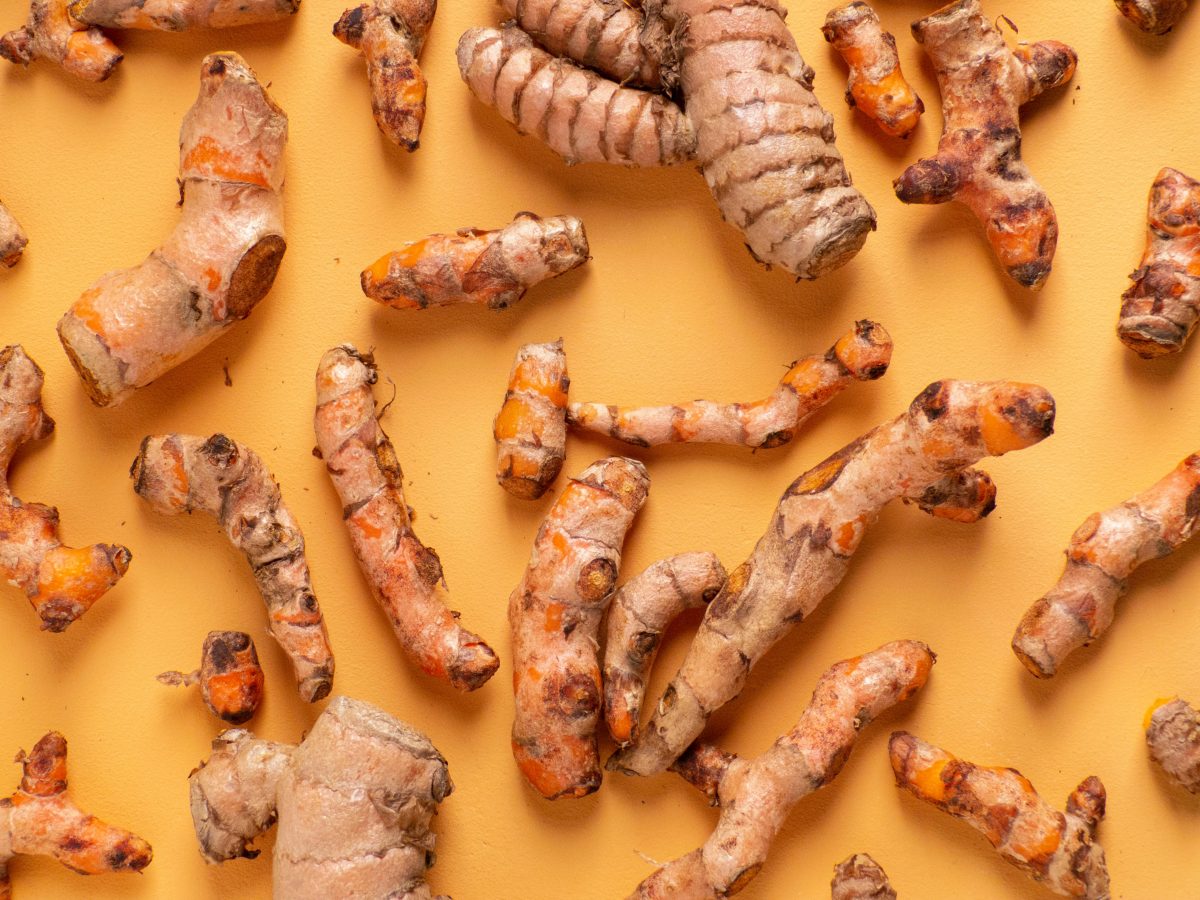
Share this post!
Turmeric root is a relative of ginger. It is a yellow spice frequently used in Indian cooking, with a long history of use in Ayurvedic medicine. Turmeric is 5-10% curcumin, which is the active medicinal compound in turmeric.
There have been over 5,000 studies on turmeric; due to the various health benefits that curcumin has to offer. Curcumin is a very interesting molecule in the way that it interacts with other molecules. It affects more than 100 cellular proteins. (Thus the wide range of health benefits that we see.) Several organizations have tried to patent turmeric as a drug to treat disease. Thankfully it’s still considered a spice that anyone can use.
Known benefits of curcumin:
- Decreases body weight, even when calories are increased (in mouse studies).
- Improves glucose levels.
- Improves brain function.
- Stimulates the gallbladder to produce bile and increases stomach acid.
- Helps with digestive disorders such as gas, bloating and nausea.
- Is used to heal wounds and cracked heals.
- May prevent plaque buildup of arteries (atherosclerosis), as it keeps bad cholesterol from building up in vessels.
- Helps prevent cancer.
- Acts as a potent anti-inflammatory. (Keep in mind that inflammation is central to the advancement of many diseases such as cardiovascular disease, diabetes, cancer and arthritis.)
- Helps with depression. In fact, curcumin is just as effective as Prozac in treating depression.
- Helps prevent Alzheimer’s disease
- Improves symptoms of Alzheimer’s disease
Recently, Curcumin has become a buzzword in Cancer Research. In vitro studies have shown that exposure to high concentrations of curcumin can kill cancer cells. The problem is that it takes several hours. Curcumin is not known for its bioavailability. Even when curcumin is taken in high doses, very low concentrations can be found in the blood, with even less being detected in organs where it is most needed. This is because curcumin is metabolized very rapidly in the liver and intestinal wall, and then excreted in the feces.
Strategies to increase the bioavailability of curcumin:
1) Mixing it with pepper, as pepper enhances curcumin’s absorption by 2000 percent. Pepper interferes with glucuronidation , a process that the body uses to make substances more water-soluble so that the body can eliminate these substances quickly in the urine. (See here)
2) Adding a fat such as olive oil to the supplement, since turmeric is fat-soluble.
But is making curcumin more bioavailable the answer?
Extremely high concentrations of curcumin can be toxic and cause DNA damage. (See here)
And although studies show that low concentrations of curcumin have an antioxidant effect, high concentrations increase the cellular levels of reactive oxygen species. Reactive oxygen species (ROS) are chemically reactive molecules that contain oxygen. These molecules can cause oxidative stress, which results in DNA damage.
Although ROS can be toxic to cells, they are not necessarily what you’d call “bad”. Reactive oxygen species play an important role in our immune system by protecting cells from pathogens in our body. They are also involved in cell signaling to help repair wounds.
High levels of curcumin can also cause an iron deficiency, as it is an active iron chelator. (Interestingly, an iron-deficiency is also an oxygen-deficiency.)
The body does have the ability to make enzymes that can remove ROS. I believe that in a healthy individual, the body innately knows what the right balance of ROS is.
So is a super potent bioavailable curcumin something we want?
What if we really shouldn’t overdo a good thing?
Which brings to me a paper that I found, which was most interesting. (See here.)
In a nutshell, the paper discusses how when researchers measure the level of curcumin in the blood during absorption studies, the value of curcumin is based upon total curcuminoids and their metabolites. The metabolites that are studied, however, are “reduction, conjugated or cleavage products”. In this paper, the author talks about “oxidative” metabolites (which are completely different molecules that are formed). And it’s these molecules that are created during metabolization, where turmeric’s health benefits may very well come from. If this is the case, a super potent bioavailable curcumin that lingers around longer in the blood might just be a moot point.
Even though curcumin is not very bioavailable, it is still effective against health issues such as diabetes, cancer, cardiovascular disease, Crohn’s disease, arthritis, and neurological diseases. We also know that people in Okinawa, Japan, who have the world’s longest average life span, drink turmeric tea every day.
So how about making yourself a turmeric beverage! Here is a terrific recipe from Elena’s Pantry:
Turmeric Root Milk
1-cup almonds
2 cups water
¼ cup turmeric root, sliced
1-tablespoon ginger, sliced
- Soak almonds overnight in several cups water
- Discard soaking water and rinse almonds in a deep bowl of water, repeat until water runs clear
- Place soaked almonds, 2 cups water, turmeric root, and ginger root in a vitamix
- Blend on high speed for 60 seconds
- Strain milk through a nut milk bag
- Save pulp to make cookies or crackers (See here)
- Serve
Makes 2½ cups turmeric root milk
Other great recipes that use turmeric: Immunity Broth and Root Veggie Mash
Want to learn how to create and prepare recipes like this through a healthy cooking program?
Join our Natural Food Chef Program! Picture yourself in your kitchen surrounded by nothing but organic vegetables, whole grains, top-quality meats, eggs and a range of the more unusual things like pâté, kimchi, kefir and bone broth. If you resonate with the idea of creating delicious meals that are not only healthy but downright regenerative, then join us for our 15-week Natural Chef program! Reach out to our Admissions team with any questions about NTI or the Natural Food Chef courses: ad********@*******ol.com
Image: Image by FOODISM360 is free for use by Unsplash
Share this post!




















